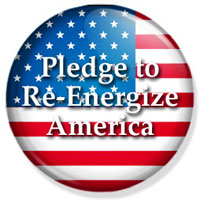 In order to create a well balanced blog and provide an alternate viewpoint we have inserted an article in its entirety written by Chris Ferdinandi on June 24, 2009 for the blog Renegade HR.
In order to create a well balanced blog and provide an alternate viewpoint we have inserted an article in its entirety written by Chris Ferdinandi on June 24, 2009 for the blog Renegade HR.
We believe that shared values within each of the generations shapes behaviour and impacts how the generations related to each other. Chris on the other hand is not so convinced. We’ll now turn it over to Chris to provide the alternate viewpoint.
Over the last few years, there’s been an explosion of information about how to manage a multi-generational workforce.
There have been countless articles, seminars and books on how to keep the Millennials engaged and how to help Baby Boomers and Gen X employees work with them more effectively. I think that’s all a big waste of time.
I don’t do thinks because I’m Generation Y
The big theory around multi-generational workforces is that shared experiences during a generation’s formative years creates a set of shared values that guide their behavior. Gen-Y is allegedly very influenced by 9/11, helicopter parents and exponential growth in technology.
I’ll admit that technology is something my generation is, generally speaking, very comfortable with. But I have friends who aren’t on Facebook, and I know plenty of Boomers who text and email far more than they pick up a phone.
There’s as much diversity within generations as there is between them
Given that level of diversity doesn’t it makes sense to stop focusing on differences between generations, and start looking at differences between individuals?
The Individual Workforce
The real goal of the multi-generational workforce movement is to help everyone in your organization work together effectively. Focusing on generations is divisive. It requires you to lump people into categories and teaches managers to treat everyone within that category the same. Doesn’t it make more sense to teach managers how to deal with individual work preferences?
I think organizations could manage a diverse workforce much more effectively if they took all of the “stuff” that gets taught during multi-generational seminars and ripped away the generational labels.
Teach managers why some people prefer to text or email instead of call. Teach them to have discussions with their employees about how they prefer to work, and to get out of the way and let their people do amazing things

 Many interactions between generations in the workplace are positive and often go unnoticed. It’s the negative experiences that get noticed and cause people to expend time, energy and emotional resources. Workplace issues between members of different generations are generally not pleasant or productive. Research indicates that these types of experiences are taking place more often resulting in decreased productivity and employee satisfaction. In short these negative experiences represent a real cost (i.e. falling productivity, increased turnover and lost opportunities) to organizations.
Many interactions between generations in the workplace are positive and often go unnoticed. It’s the negative experiences that get noticed and cause people to expend time, energy and emotional resources. Workplace issues between members of different generations are generally not pleasant or productive. Research indicates that these types of experiences are taking place more often resulting in decreased productivity and employee satisfaction. In short these negative experiences represent a real cost (i.e. falling productivity, increased turnover and lost opportunities) to organizations. Dr Bob Rausch (aka “The Energy Doctor”) a noted American author and motivational speaker views multi-generations in the workplace in terms of the energy they provide to the organization. The way in which a single person uses his/her personal energy impacts everything from performance to productivity and ultimately to the success of the company. Dr. Rausch has identified 13 specific steps that organizations can take to maximize energy across the generations. These steps can be used in conjunction with information provided earlier in the blog entry titled “Best Practices for Managing a Multi-Generational Group”.
Dr Bob Rausch (aka “The Energy Doctor”) a noted American author and motivational speaker views multi-generations in the workplace in terms of the energy they provide to the organization. The way in which a single person uses his/her personal energy impacts everything from performance to productivity and ultimately to the success of the company. Dr. Rausch has identified 13 specific steps that organizations can take to maximize energy across the generations. These steps can be used in conjunction with information provided earlier in the blog entry titled “Best Practices for Managing a Multi-Generational Group”. In the US and many other developed countries the birth rate has been dropping since the late 1960s. In the US it has been estimated that by 2010 the number of people in the 35-44 (i.e. the middle management age-group) will drop by nearly 20%.
In the US and many other developed countries the birth rate has been dropping since the late 1960s. In the US it has been estimated that by 2010 the number of people in the 35-44 (i.e. the middle management age-group) will drop by nearly 20%. In today’s society managers have the opportunity to supervise four different generations at once. This multi-generational workforce is the first of its kind and managers are learning ways to bridge the gap between the generations. There are a few best practices noted to assist in merging the different generations into a cohesive workforce.
In today’s society managers have the opportunity to supervise four different generations at once. This multi-generational workforce is the first of its kind and managers are learning ways to bridge the gap between the generations. There are a few best practices noted to assist in merging the different generations into a cohesive workforce.  Managing a diverse workforce can certainly be challenging and problematic at best. As more of the Millennials enter the workforce and work side by side with the Baby Boomers, Matures and Generation-Xers, the more managers have to learn that one approach does not fit all. This is because each generation has unique view points and values that contrast their specific generation.
Managing a diverse workforce can certainly be challenging and problematic at best. As more of the Millennials enter the workforce and work side by side with the Baby Boomers, Matures and Generation-Xers, the more managers have to learn that one approach does not fit all. This is because each generation has unique view points and values that contrast their specific generation.